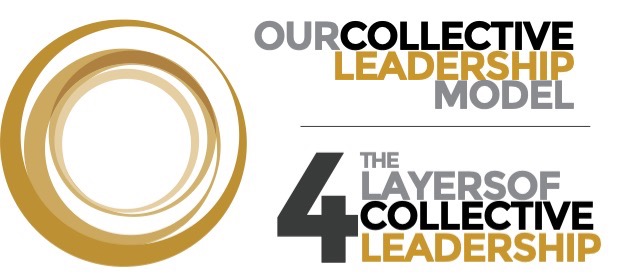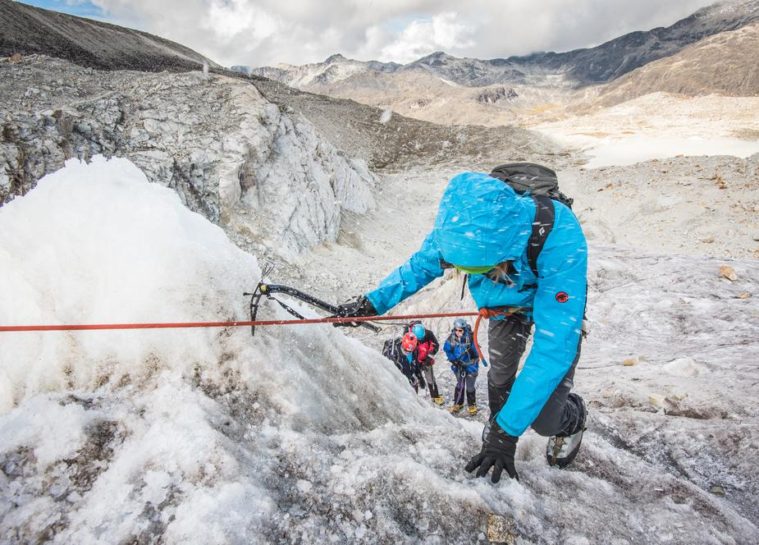Does your team struggle to make systems leadership real? In our Collective Leadership Model an awareness of The Four Layers can help you to create the shift you need.
Leading collectively sounds great, but can feel like the elusive holy grail when you are caught up in the pressures of personal business commitments and deliverables. The 4 layers can make it possible for a team to actualise systems leadership, meeting business commitments together. They are termed layers because each one needs to be in place before the next one can be realised, each one creating the foundation for the next.
The layers represent a process and a journey for a team to take together that can be readily understood and, with effort and commitment, ultimately attained. The 4 layers are another vital ingredient in creating the fertile ground in which leading from a systems perspective can develop and flourish in your team.
Think about the team(s) you are a part of, whether as the leader or a peer, and consider your insights:
- How well do you really know your team members? This refers to not only the kind of person each team member is, but also the particular strengths, talents and challenges that they bring to the team?
- How effectively do you leverage each other’s strengths as you interact and lead together?
- What are the systems dynamics that play out in your team and how could they be optimised?

If you each had greater insight into these questions, how do you think your team’s collective performance might increase?
It is natural that our primary focus tends to be on our deliverables, meeting our daily challenges and being fully accountable. Focusing our attention on others and on the team (the human system) as well can feel like a real stretch and we often fall short, even though the value of this is obvious. This is a competency that most of us can develop further. The stretch for each of us is not so much what we know intellectually, but rather how well we are able to put what we know into practice, to actually “be” it.
Here’s where the Four Layers of our Collective Leadership Model are helpful.

The team members:
- Are present and aware of self, each other and the system, and are able to express themselves openly, naturally, respectfully and fully authentically.
- Know themselves and each other at a core level, their unique talents, strengths, challenges and perspectives.
- Are connected to their shared purpose and aware of their system dynamics, and are able to co-create and co-lead from that understanding.
- Are in touch with what is unfolding, able to read the signals and connect the dots, and to re-pattern their system in the moment, knowing when to lead and when to follow to meet the requirements of the emerging future.
Let’s discuss each of these in turn. First – let’s remind ourselves:
What is a Collective Leadership Model?

In a systems leadership model, leaders know how to generate results collectively: how to call on everyone’s participation and leverage all expertise, working within a shared clarity of purpose, while also finding direction through being alert and sensing future opportunities and possibilities ahead.
Collective leadership allows and trusts that each member will engage himself fully and take ownership for the whole, contributing his unique skills and perspectives. When leading collectively the intelligence and the creative power of the whole is harnessed. This whole intelligence has a different quality from the sum of the individual strengths. This emergence is the key to a human system’s creativity, innovation, and sustainability.
The geese flying in formation express this kind of systemic, agile, organic leadership. They are role models for the 4 layers.
Collective Leadership Model Layer One – Aware of Self and Other, Fully Authentically Expressed
This layer ties directly to our first principle, which focuses us on who we are being in our leadership. The starting point is self-awareness, knowing who we are and what we stand for. We are then able to be open and to deepen our awareness of the others in our team – the people that they are, and how that constitutes the team as a whole. This values driven awareness guides all our emotionally intelligent behaviours.
But it takes more than that to achieve the first layer of collective leadership. We also need to be willing to express ourselves openly, respectfully and with full authenticity. Many leaders tell us “In the hot political environment of our organisation, being fully authentically expressed is just not possible, it would be suicide!” Yet, unless the team members can absolutely trust that they have this from each other, they will lack the solid foundation for leading collectively.
When the team culture trusts that this is in place, enough safety is created for people to freely offer up to the collective their insights, expertise, strengths, creativity and innovation and to express themselves fully, speaking up even when it feels challenging to do so.
Collective Leadership Model Layer Two – Know each other at the core: talents, strengths, challenges and perspectives
This layer is also grounded in our first principle, the “being” of us in our leadership, and also ties directly to the second principle, leading from the whole. Leading from the whole focuses us on who is in the human system and their potential to contribute. The quality of our awareness depends on how well we have developed our systems intelligence. Our ability to leverage the strengths and opportunities in the system is directly proportionate to our depth of insight into the system. Here is the opportunity to raise team performance.
At Leadership Coefficient we create visibility of the system through our unique body-based assessment methodology, Embodied Leader Strengths Profile (ELSP). This enables us to profile each team member and the team as a whole in a highly experiential (body-based) mode that creates learning that sticks. I will be saying more about ELSP in a future article in this series.
Collective Leadership Model Layer Three: Connected to their shared purpose, aware of their dynamics, and able to co-create and co-lead from that understanding
Collective leadership requires a sense of shared purpose as a basis. When a team is aligned around a meaningful purpose, the collective resonance generates effort and commitment to the whole. Silo behaviour is diminished as the team takes on the paradigm of systems thinking and leading.
Human systems have a natural and innate intelligence that sparks innovation. The greater a team’s systems intelligence, the greater the opportunity to optimise dynamics and enhance performance.
The art of co-creating and co-leading, often in the face of conflicting ideas or opinions, becomes easier and smoother when a team is operating from a shared understanding and visibility of the system purpose and capacities.
Collective Leadership Model Layer Four: Sensitive to the signals of change; able to re-pattern their system, knowing when to lead and when to follow, to meet the emerging future

Lead and Follow, Follow and Lead
Our 3rd principle discusses how to lead from the emerging future, rather than only from past experience or current mental models. Change and disruption are a part of our daily lives; broad systems awareness at a collective level – roaming globally – generates the sensitivity to future emergence required for a system to remain sustainable.
As a team reads and responds to the signals of change, the ability to fly in formation like the geese – always having the right person in front pointing direction and taking the head wind, always harnessing the different strengths to meet the needs of the moment – creates the possibility to lead from the emerging future, rather than reacting to it.
What does it require of us to do this? A mind-set of “lead and follow, follow and lead”, in which innate strengths determine who is “out in front” at any moment, not hierarchy or ego. Teams that are able to lead in this highly organic, agile, systemic way have the greatest chance of harnessing the opportunities of the future, as opposed to being harnessed by them.
The Pathway to a Collective Leadership Model
Developing and integrating a range of complex, adaptive systems leadership competencies is a journey for both an individual and a team. It starts with self (Principle 1), transitions to the system (Principle 2), and goes from there to the broad field (Principle 3). The 4 key conditions must then be layered in to actualise a systems leadership model.
At Leadership Coefficient we take intact teams through a process in which they gradually develop as a coherent whole. The members begin to relate in new ways, broadening to organisation-wide views. Aligning together around their shared purpose and aware of each other’s strengths and potential for contribution, they are supported to shift out of silo thinking and into systems thinking. Together, they develop the emotional maturity that will support a culture of agility through systems leadership.
This is how we are able to increase overall team effectiveness and performance.
